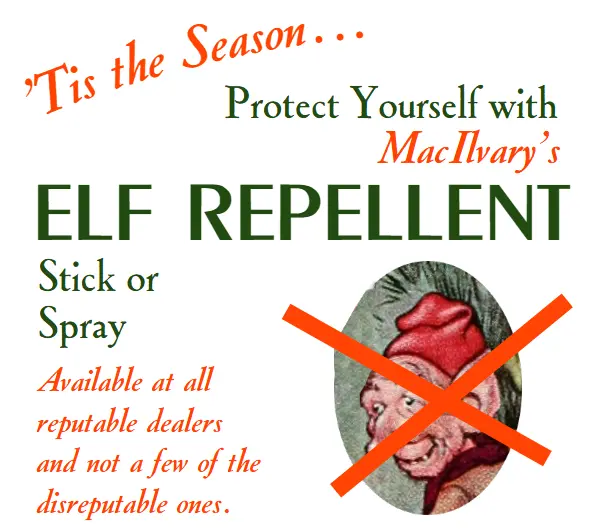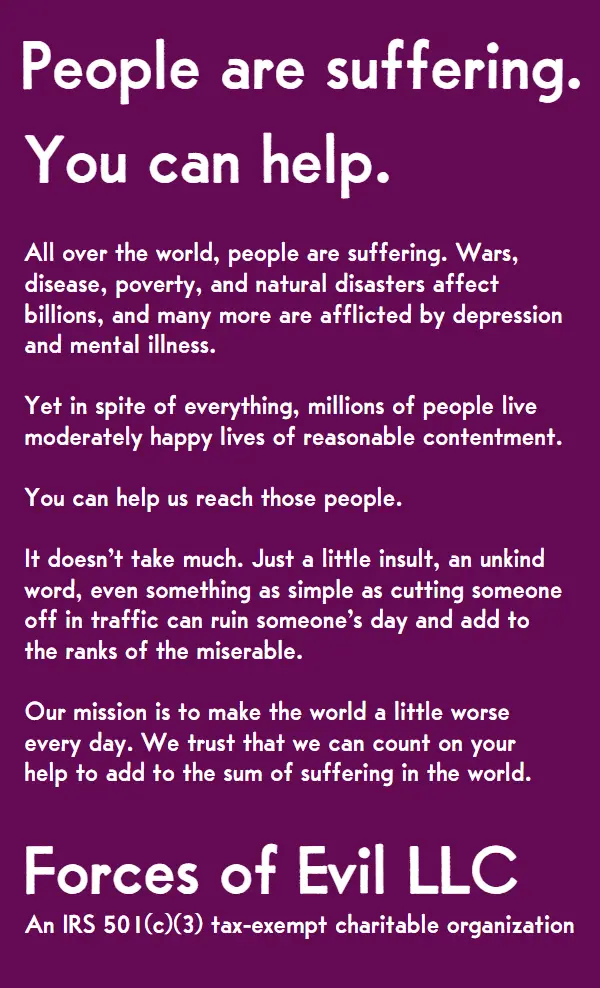OUR VALUED CORRESPONDENTS.
Why does everything these days need to be a “journey”? Although, I suppose that a cheese wheel smooths the personal journey toward full spiritual potential.
Dr. Boli will not presume to answer on behalf of his advertisers. He can only offer his own opinion: everything is a “journey” because, if you actually reached the spiritual destination on offer, you would find it was not all it was cracked up to be.
Advertisement.
THE PARLORMAID, THE BUTLER, AND FINNEGANS WAKE.
“Pardon the intrusion, sir,” she said, “but the parlormaid requested guidance which one was unable to give her without consultation. She reports that she found a copy of Finnegans Wake next to the large aspidistra on the side table, rather than on the floor as usual. At first she assumed it had been tossed there, but on closer inspection it seemed to have been placed rather than tossed. She asked whether she ought to recycle it, as usual, or whether sir had some other destiny in mind for it.”
“She is an intelligent young lady,” we replied, “and she was quite correct to ask for guidance. Sir did indeed place the book there, because sir has finally, after eighty-six years of desultory attempts, read every blessed word of Finnegans Wake.”
“Then is it sir’s desire that the book should be recycled?”
“No,” we said quite definitely. “It is sir’s desire that it should be taken to a reputable service and bronzed.”
ASK DR. BOLI.
Dear Dr. Boli: Pit bulls have become a very popular dog breed lately, and I usually see them just as housepets. But they have a peculiar shape that makes me think they were bred for some practical employment. The name “pit” suggests something to do with the stock market, but I couldn’t find any confirmation of that speculation. What was the original purpose for which pit bulls were bred? —Sincerely, Bancroft E. FitzWallaby, President, Mid-Atlantic Association of Idle Speculators.
Dear Sir: You will find all sorts of incorrect assertions about the origin of pit bulls, usually based on folk etymology and presented as fact. The truth, however, is simple, and not hard to deduce from the form of the animal, which you correctly guessed was dictated by practical utility. Pit bulls were bred to be dishwasher-preparation dogs in the “dish pit” of busy mess halls, dining halls, restaurants, and other eating establishments. They are the product of generations of selective breeding with the aim of producing a dog whose tongue is broad and agile enough to sweep a plate clean in two licks. Furthermore, many of the pit bulls you supposed were simply housepets are in fact productively employed in their families at the work for which their ancestry has fitted them.
ON THIS DAY IN HISTORY.
Advertisement.
FROM THE ILLUSTRATED EDITION.
From DR. BOLI’S CULINARY DICTIONARY.
Ba-wan.—Taiwanese pierogies.
Gyoza.—Japanese pierogies.
Kreplach.—Ashkenazi Jewish pierogies.
Mandu.—Korean pierogies.
Maultaschen.—German pierogies.
Momo.—Tibetan and Nepalese pierogies.
Pelmeni.—Russian pierogies.
Pupusas.—Salvadoran pierogies.
Samosas.—Indian pierogies.
Sambusas.—Ethiopian pierogies.
Wonton.—Chinese pierogies.
Pierogies.—Polish ravioli.





